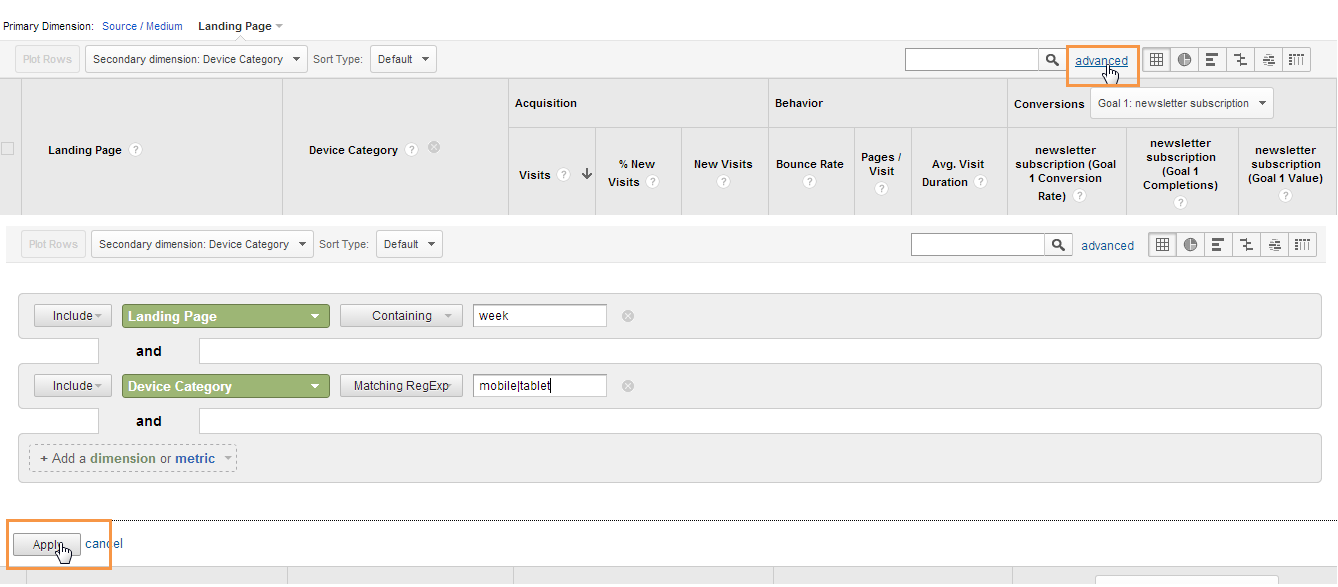Improve Your Metrics: Understanding Google Analytics Secondary Dimension
Improve Your Metrics: Understanding Google Analytics Secondary Dimension
Blog Article
Opening the Power of Secondary Measurement Analytics for Boosted Data Insights and Decision-Making
In the world of data analytics, primary dimensions often take the spotlight, yet the real deepness of insights lies within the world of second measurements. By taking advantage of the power of additional dimension analytics, companies can introduce concealed patterns, uncover relationships, and remove extra purposeful final thoughts from their data.
Significance of Secondary Measurements
Discovering the relevance of additional dimensions in analytics introduces the concealed layers of data understandings critical for educated decision-making in different domains. Second measurements offer a deeper understanding of main data by supplying extra context and perspectives. By integrating secondary measurements into analytics, companies can draw out extra extensive and nuanced understandings from their datasets.
One secret relevance of additional measurements is their ability to segment and categorize key data, permitting for a much more thorough analysis of details subsets within a dataset. When looking at the data as a whole, this division makes it possible for companies to recognize patterns, trends, and outliers that may not be noticeable. Moreover, additional measurements help in discovering relationships and dependences between different variables, causing even more accurate forecasting and anticipating modeling.
Furthermore, secondary dimensions play a critical role in enhancing data visualization and reporting. By adding additional measurements to visualizations, such as charts or graphes, experts can develop more insightful and interesting depictions of information, promoting far better interaction of searchings for to stakeholders. On the whole, the assimilation of second measurements in analytics is critical in unlocking the full possibility of information and driving evidence-based decision-making.
Trick Benefits of Using Second Measurements
Making use of additional measurements in analytics provides companies a critical benefit by increasing the depth and granularity of information understandings. One key advantage of incorporating additional measurements is the capability to sector and filter information, enabling a much more comprehensive analysis of specific facets within a dataset. This division allows organizations to obtain a much more nuanced understanding of their audience, performance metrics, and various other critical information points. By studying information using second measurements such as time, location, tool kind, or user demographics, companies can discover patterns, trends, and relationships that might otherwise continue to be concealed.
Moreover, the usage of additional measurements boosts the context in which key information is interpreted. By leveraging secondary dimensions in analytics, organizations can harness the complete possibility of their information to drive better decision-making and achieve their company objectives.
Advanced Data Analysis Methods
A deep study sophisticated information evaluation methods exposes advanced approaches for removing beneficial understandings from intricate datasets. One such strategy is artificial intelligence, where formulas are used to identify patterns within information, forecast results, and make data-driven choices. This approach permits the automation of logical design structure, making it possible for the handling of huge quantities of data at a faster pace than typical approaches.
An additional sophisticated method is predictive analytics, which uses analytical formulas and device knowing techniques to anticipate future results based on historical information. By examining trends and patterns, organizations can expect customer actions, market fads, and prospective risks, encouraging them to make positive decisions.
In addition, he said text mining and sentiment evaluation are important techniques for removing insights from disorganized data sources such try this website as social media sites comments, consumer evaluations, and survey actions. By evaluating message data, companies can comprehend consumer viewpoints, identify emerging patterns, and enhance their solutions or products based on responses.
Enhancing Decision-Making With Secondary Measurements

Enhancing decision-making through secondary measurements makes it possible for companies to make even more educated and targeted strategic options. By segmenting client information based on additional measurements like acquiring history or interaction levels, business can tailor their advertising and marketing approaches to specific audience segments, leading to improved conversion rates and customer complete satisfaction. Additionally, additional measurements can assist determine connections and connections between different variables, enabling organizations to make data-driven decisions that drive growth and productivity.
Implementing Second Measurement Analytics
When including second measurements in analytics, organizations can unlock deeper insights that drive calculated decision-making and enhance general performance. This entails recognizing the certain concerns the organization looks for to answer and the information points needed to resolve them.

Moreover, organizations must leverage advanced analytics tools and modern technologies to simplify the procedure of integrating secondary dimensions. These devices can automate data handling, analysis, and visualization, permitting organizations to concentrate on translating understandings instead of manual data control.
Conclusion
Finally, secondary dimension analytics play a vital function in enhancing information insights and decision-making procedures. By using innovative data evaluation strategies and carrying out second measurements effectively, companies can unlock the power of their information to drive tactical organization decisions. The vital benefits of making use of second dimensions can not be overstated, as they offer a deeper understanding of data trends and relationships. It is essential for organizations to utilize secondary measurement analytics to remain competitive in today's data-driven landscape.
In the world of information analytics, main measurements frequently take the spotlight, however the true deepness of insights exists within the realm of secondary measurements.Using secondary measurements in analytics offers companies a critical benefit by augmenting the depth and granularity of data insights. By leveraging secondary measurements in analytics, organizations can harness the complete capacity of their data to drive far better decision-making and accomplish their organization objectives.
Carrying out information validation processes and normal audits can aid preserve data high quality and reliability.
By utilizing sophisticated information evaluation techniques and implementing secondary measurements effectively, organizations can open the power of their data to drive calculated service choices.
Report this page